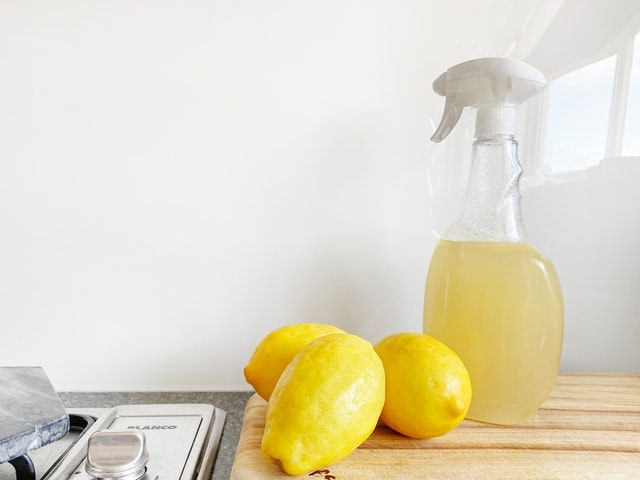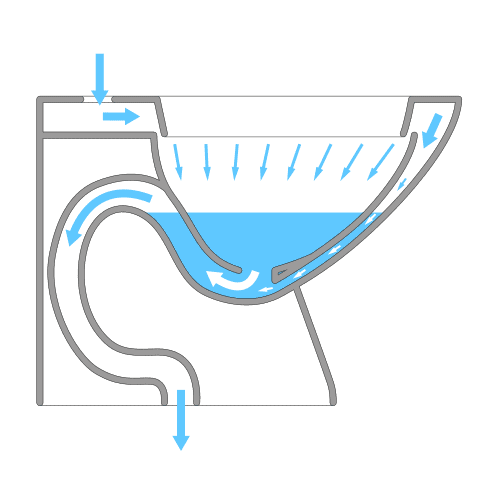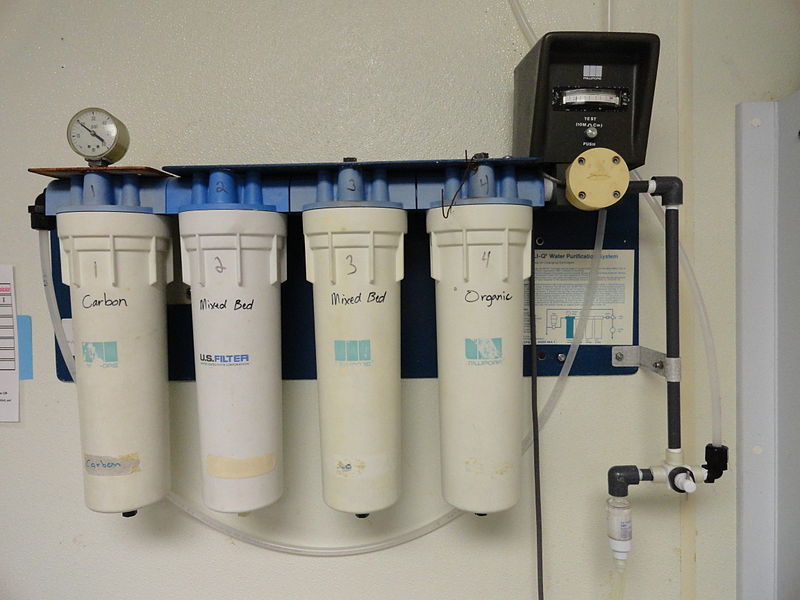Dealing with calcium buildup is a common issue in the United States. Approximately 85 percent of American homes have hard water!
Limescale can wreak havoc on your toilet, preventing it from operating efficiently. Luckily, there are ways to prevent calcium buildup on your commode. Let go over how to prevent calcium buildup in the toilet.
In This Article We'll Discuss
What is Limescale
Limescale is that white chalky substance that likes to collect on fixtures. It’s sometimes referred to as calcium buildup or hard water stains. You might see it on your shower head. Oftentimes, it collects on dishes, too.
Hard water is to blame for limescale. When you have hard water in your home, it means that your water supply has dissolved minerals in it. In most cases, it’s high concentrations of calcium and magnesium salts.
By American National Standards, anything above 1 grain of minerals per gallon of water is “hard.” Depending on where you live, you could have “very hard” water or just “moderately hard” water.
Whatever the case may be, those minerals can solidify and cause tons of problems! The minerals can clog your pipes, damage fixtures, and more. Some studies even point to potential health issues stemming from hard water.
So how does it affect your toilet? Well, your toilet has several small openings for water to travel. Take a look under the rim of the toilet bowl and you’ll see a series of siphoning jets.
When those little holes get clogged by limescale, your toilet will not flush efficiently. It wastes water and can lead to a litany of additional problems. Plus, it affects the smooth finish of your porcelain throne!
Needless to say, getting rid of that calcium buildup once for all is paramount. Here are some ways that you can prevent limescale from affecting your toilet.
#1: Scrub the Toilet Regularly
The best way to prevent buildup is to simply clean your toilet regularly. As we mentioned earlier, calcium tends to collect beneath the rim of the toilet bowl. The longer those minerals sit, the harder they become to clean.
By scrubbing the buildup away regularly, you can prevent those stains from affecting the performance of your commode.
Take a small mirror to inspect the flushing jets in the toilet bowl. If you see any blockages or brown water stains, it’s time to clean.
Use a stiff-bristle brush to gently remove any buildup you see. Avoid using metal brushes or abrasive pumice stones.Some homeowners like to use a wire hanger to dig stubborn limescale out of the jets.
This can be effective. But exercise caution! Too much abrasive action could damage the finish of your toilet. This will only exacerbate your limescale issues.
Be gentle and take care of your fixture. If you stick to a routine cleaning schedule, the calcium buildup shouldn’t be too difficult to remove.
If you need some tips on how to scrub & clean your commode, check out this video:
#2: Use Natural or Chemical Descalers
If you don’t feel like putting in the elbow grease, you can use lime scale dissolvers to clean. Dissolvers typically contain acids. These acids react with the calcium buildup, creating soluble salts that you can just wash away calcium in the toilet bowl.

Dissolvers effectively turn those solidified minerals back into liquid form. There are many types of chemical acids that you can use. These include:
- Lactic acid
- Acetic acid
- Gluconic acid
- Formic acid
- Hydrochloric acid
- Boric acid
You can find many of these acids in popular household cleaning products. Those that target limescale usually contain a couple of them.
Just be careful when using acids!.They produce strong fumes that could be harmful to your health.
If you prefer a more natural alternative to chemical products, you can also use vinegar to clean. White vinegar has a low pH of around 2.4, making it acidic enough to get rid of limescale. It’s cheap, natural, and safe!
Whether you use vinegar or a chemical acid to clean, the trick is to let the solution soak. Add several cups of the solution to the toilet bowl. If necessary, fill the bowl up so that the water is making contact with the rim jets.
You can also add your dissolving solution to the water tank. Let the solution sit for a few hours or overnight. Then flush the toilet. The calcium buildup should flush away with it.
#3: Keep Things Dry
Limescale forms when water evaporates on a dry surface. The mineral deposits in the water don’t evaporate with it, leaving behind that crusty buildup you want to avoid.
One way that you can prevent buildup is by keeping your toilet dry. Obviously, it’s not possible to keep every part of your toilet dry. But, you can take steps to reduce the amount of water that’s left to sit on the porcelain.
Take a look at this diagram:

As you can see, water travels around the rim with every flush. Oftentimes, dripping water from those jets causes calcium buildup. Take a toilet brush to the rim after every flush to knock off excess water. That simple task can do a lot to prevent dripping hard water stains.
Make sure you take care water around the seat, too. More powerful toilets can easily splash water up around the seat hinge. Not only does this cause limescale buildup, but it may also lead to rusting!
#4: Invest in a Water Softener
The best way to prevent calcium buildup is to address the issue at its source.

A whole-home water softening system ensures that the water flowing through your toilet is mineral-free. These systems work by replacing calcium and magnesium ions with sodium ions.
Sodium does not scale like other mineral deposits. Thus, your toilet can stay limescale-free.
Water softeners are a big investment. But, they are worth considering if hard water is a big problem. Most systems require installation at your home’s water source.
Thus, the system treats ever drop of water flowing through your pipes. This can prevent widespread limescale issues and keep your fixtures in good shape.
#5: Purchase an Electronic Descaler
Another option is to invest in an electronic descaler. These systems are still relatively new to the market. Sometimes, manufacturers will advertise them as “salt-free” softeners.
In reality, water descalers are completely different from softeners. The job of a descaler is to prevent limescale buildup. How does it do this?
Well, these systems use a magnetic field to create a light electric charge. This process charges the minerals in your water, which prevents scale deposits.
An electronic de-scaler works to reduce the chances of limescale forming. It has many of the same benefits as a water softener, but it’s not the same thing. The minerals will remain in the water!
Like a water softener, these systems treat your home’s entire water supply. They can be a bit pricier to install. However, they don’t have the same involved upkeep. A descaler will keep your toilet limescale-free without all of the maintenance that comes with softeners.
Conclusion
What do you think about our limescale prevention solution? Let us know in the comments below and share this article if you liked it!
If you’re dealing with limescale issues, give these tips a shot. With a few simple changes, your toilet can run smoothly for years to come.

